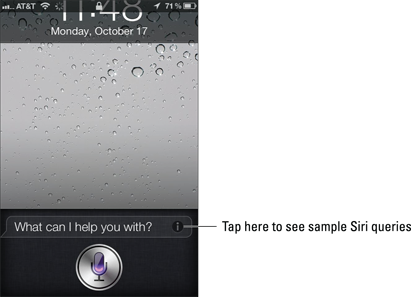Figure 7-2: Siri can help you prepare for the weather.
Summoning Siri
When you first set up the iPhone 4S or iPhone 5, you have the option of turning on Siri. If you did so, you’re good to go. If you didn’t, tap Settings⇒General⇒Siri and flip the switch so that On is showing. (If you do turn Siri off on the 4S, it effectively turns on Voice Control.)
To call Siri into action, press and hold the Home button until you hear a tone and then start talking. Pretty simple, eh? At the bottom of the screen, you’ll see a picture of a microphone inside a circle, as shown in Figure 7-1. The question, “What can I help you with?” appears on the screen. Alternatively, when the screen isn’t locked, bring the phone up to your ear and wait for that same tone, and then talk. Siri responds also when you press a button on a Bluetooth headset.

Figure 7-1: Siri is eager to respond.
What happens next is up to you. You can ask a wide range of questions or issue voice commands. If you didn’t get your words out fast enough or you were misunderstood, tap the microphone icon and try again.
Siri relies on voice recognition and artificial intelligence. She’ll respond in a conversational (if still slightly robotic) manner. But using Siri isn’t entirely a hands-free experience. Spoken words are supplemented by information on the iPhone screen (as you see in the next section).
And just where does Siri get that information? She seeks answers from the web using sources such as Yelp, Yahoo!, Open Table, and WolframAlpha, which you can learn more about in the coming sidebar. She taps into Location Services on the phone.
Figuring out what to ask
The beauty of Siri is that you don’t have to follow a designated protocol when talking to her. Asking, “Will I need an umbrella tomorrow?” (which Siri heard as “Well I need . . .”), as shown in Figure 7-2, produces the same result as “What is the weather forecast around here?”

If you’re not sure what to ask, tap the circled i to list sample questions or commands, as shown in Figure 7-3. You can tap on any of these examples to see even more samples.

Figure 7-3: Siri can help out in many ways.
Here are some of the ways Siri can lend a hand, um, voice:
![]() Phone: “Call my wife on her cell phone.”
Phone: “Call my wife on her cell phone.”
![]() Music: “Play Frank Sinatra.”
Music: “Play Frank Sinatra.”
![]() Messages: “Send a message to Nancy to reschedule lunch.”
Messages: “Send a message to Nancy to reschedule lunch.”
![]() Calendar: “Set up a meeting for 9 a.m. to discuss funding.”
Calendar: “Set up a meeting for 9 a.m. to discuss funding.”
![]() Reminders: “Remind me to take my medicine at 8 a.m. tomorrow.”
Reminders: “Remind me to take my medicine at 8 a.m. tomorrow.”
![]() Maps: “Find an ATM near here.”
Maps: “Find an ATM near here.”
![]() Mail: “Mail the tenant about the recent check.”
Mail: “Mail the tenant about the recent check.”
![]() Stocks: “What is the Dow at?”
Stocks: “What is the Dow at?”
![]() Web search: “Who was the 19th president of the United States?”
Web search: “Who was the 19th president of the United States?”
![]() WolframAlpha: “How many calories are in a blueberry muffin?”
WolframAlpha: “How many calories are in a blueberry muffin?”
![]() Clock: “Wake me up at 8:30 in the morning.”
Clock: “Wake me up at 8:30 in the morning.”
![]() Sports: “Who is pitching for the Yankees tonight?
Sports: “Who is pitching for the Yankees tonight?
![]() Trivia: “Who won the Academy Award for Best Actor in 2003?”
Trivia: “Who won the Academy Award for Best Actor in 2003?”
![]() Twitter: “Send Tweet, Going on vacation, smiley-face.”
Twitter: “Send Tweet, Going on vacation, smiley-face.”
Using dictation
In many instances where you’d use the iPhone touchscreen keyboard, you can now use Siri instead. In lieu of typing, tap the microphone icon on the keyboard and speak. Tap Done when you’re done. Dictation works as you search the web, take notes, compose messages, and so on. You can even update your Facebook status by voice.
Correcting mistakes
As we’ve pointed out, Siri is good but sometimes needs to be put in her place. Fortunately, you can correct her mistakes fairly easily. The simplest way is to tap the microphone icon and try your query again. You can say something along the lines of, “I meant Botswana.”
You can also tap the bubble showing what Siri thinks you said, and make edits by using the touch keyboard or by voice. If a word is underlined in blue, you can use the keyboard or your voice to make a correction.
Before Siri sends a dictated message, she seeks your permission. That’s a safeguard you come to appreciate. If you need to modify the message, you can do so by saying such things as, “Change Tuesday to Wednesday” or “Add: I’m excited to see you, exclamation mark” — indeed, I’m excited to see you and ! will be added.
Settings to make Siri smarter
From settings, you can tell Siri in which language you want to converse. Out of the gate, Siri was available in English (United States, United Kingdom, or Australian), French, and German. Versions in Chinese, Italian, Japanese, Korean, and Spanish were subsequently added.
You can also request voice feedback from Siri all the time or just when you’re using a hands-free headset.
In the My Info field in Settings, you can tell Siri who you are. When you tap My Info, your Contacts list appears. Tap your own name in Contacts.
If you’re concerned about Siri intruding when you raise the phone up to your ear to make a call, head to Settings as well to turn the Raise to Speak feature off.

 And Siri, as of iOS 6, can open apps, Apple’s own as well as third-party apps. Indeed, from your contacts, Siri might be able to determine who your spouse, coworkers, and friends are, as well as know where you live. You might ask, “How do I get home from here?” and Siri will fire up Maps to help you on your way. Or you can ask, “Find a good Italian restaurant near Barbara’s house,” and Siri will serve up a list, sorted by Yelp rating. She can even let you make a reservation (via Open Table).
And Siri, as of iOS 6, can open apps, Apple’s own as well as third-party apps. Indeed, from your contacts, Siri might be able to determine who your spouse, coworkers, and friends are, as well as know where you live. You might ask, “How do I get home from here?” and Siri will fire up Maps to help you on your way. Or you can ask, “Find a good Italian restaurant near Barbara’s house,” and Siri will serve up a list, sorted by Yelp rating. She can even let you make a reservation (via Open Table).
